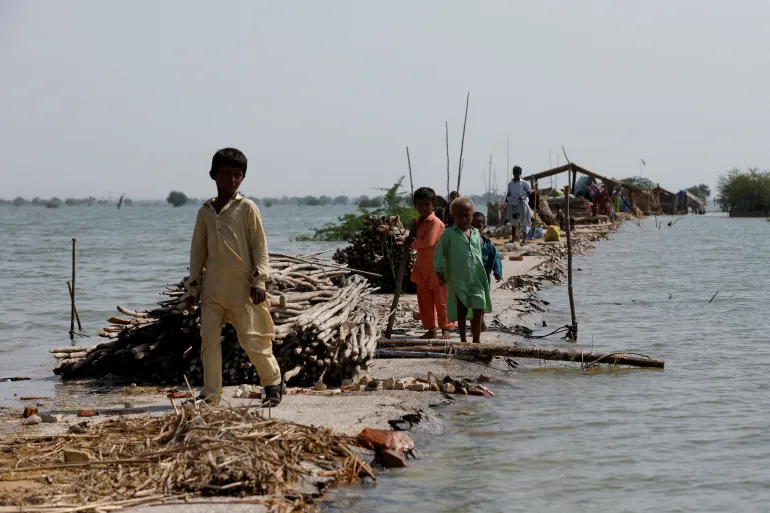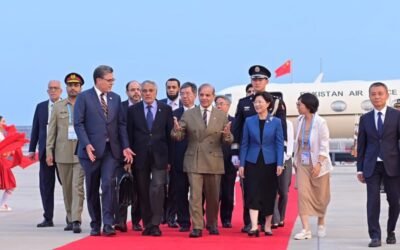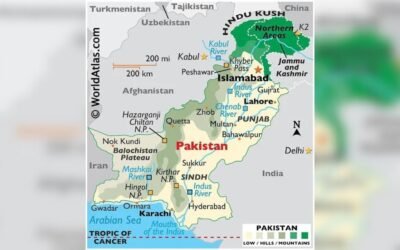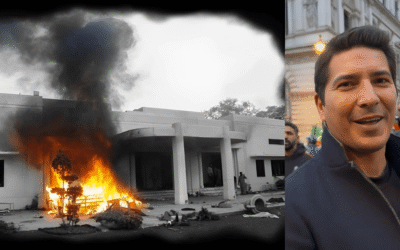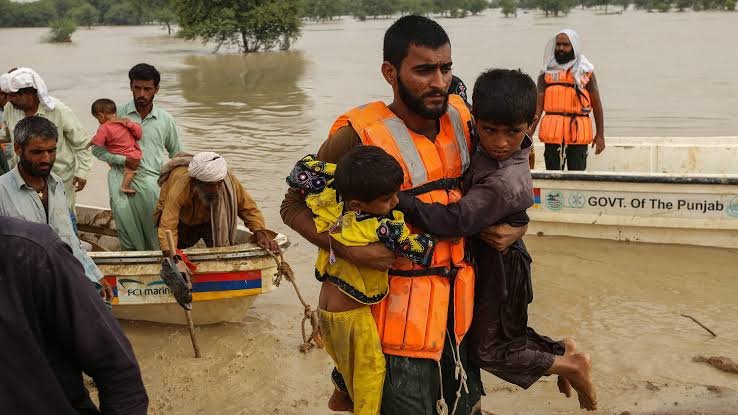 Climate change in Pakistan is no longer just about floods or heatwaves; it is also about the impact on agriculture. It’s impacting the economy, threatening public health, and compromising national security. Rising temperatures, erratic rainfall, and stronger storms are wrecking infrastructure, displacing millions, and deepening inequality.
Climate change in Pakistan is no longer just about floods or heatwaves; it is also about the impact on agriculture. It’s impacting the economy, threatening public health, and compromising national security. Rising temperatures, erratic rainfall, and stronger storms are wrecking infrastructure, displacing millions, and deepening inequality.
Economic Pressure
Pakistan’s economy could shrink by up to 20 percent by 2050 due to climate-related losses. That’s the warning from a World Bank Country Climate and Development Report. The projected impact includes damage to farmland, cities, and supply chains, all of which directly hurt jobs and food systems.
Agriculture contributes approximately 19% to Pakistan’s GDP and employs nearly 38% of the national labor force. Rising temperatures and unpredictable rainfall have already cut crop yields. That means more food insecurity, fewer exports, and higher prices.
In 2022, Pakistan experienced severe flooding, resulting in an estimated $14.9 billion in damages and $15.2 billion in economic losses. The total estimated needs for rehabilitation and reconstruction were at least $16.3 billion. Independent estimates pushed total losses closer to $30 to $40 billion.

Source: The New York Times
Between 1992 and 2021, Pakistan incurred economic losses of $ 29.3 billion from extreme weather events, adjusted for inflation, according to the World Bank Group. These losses included damage to property, crops, and livestock, and were equivalent to 11.1 percent of Pakistan’s gross domestic product in 2020.
Social and Security Fallout
Floods and droughts do more than cause destruction. They push people into poverty and force families to migrate.
In 2022, massive floods swept across Pakistan, affecting around 33 million people and forcing nearly 8 million from their homes. Triggered by relentless monsoon rains, the floods drowned entire villages, wrecked roads and bridges, and left behind a trail of destruction. More than 1,700 people lost their lives, according to the World Bank and British Red Cross.
Health systems took a beating. Infections from waterborne diseases surged. Cases of malaria, dengue, and diarrhea spiked across flood-hit areas. Malnutrition and child mortality followed.
Extreme climate stress often inflames local tensions. When there’s not enough water or power to go around, landowners, businesses, and communities start competing. In a fragile political climate, it can trigger conflict.
Energy Deficits and Public Health
Pakistan’s power grid already struggles to meet demand. When climate events disrupt electricity, the impact on hospitals and public services can be deadly.
A 2024 UNICEF study estimated that improving energy supply in Pakistan could save 175,000 lives by 2030, primarily those of children. Better access to power would also reduce illness and strengthen the health system’s response during heatwaves, floods, and disease outbreaks.
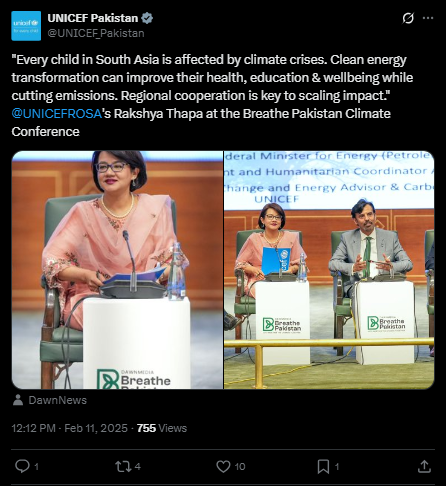
Source: X/@UNICEF_Pakistan
The same study predicted that improving energy systems could boost the economy by $296 million by 2044, by keeping more children in school and reducing the number of people in hospitals.
The Climate Financing Gap
Pakistan requires substantial investment to prepare for future climate-related shocks. Experts estimate the country will require $348 billion by 2030 for adaptation and mitigation. That’s nearly 10 percent of its annual GDP.
Yet most climate finance is being offered as loans, not grants. That adds to Pakistan’s already heavy debt burden.
At a climate conference in Geneva in 2023, international donors committed more than 9 billion dollars to help Pakistan recover from the catastrophic floods of 2022. The funding pledges were made during the International Conference on Climate Resilient Pakistan, jointly hosted by Prime Minister Shehbaz Sharif and UN Secretary-General António Guterres. The conference focused on mobilizing support for rebuilding efforts after the floods devastated large parts of the country and disrupted the lives of millions.
The International Monetary Fund (IMF) has linked portions of its $7 billion Extended Fund Facility (EFF) for Pakistan to climate-related reforms. To unlock these segments of the loan, Pakistan is required to adopt and implement specific environmental policies and climate-focused measures.

Source: X/@DunyaNews
Since the start of the monsoon season, 266 people have lost their lives and 628 have been injured across Pakistan. The fatalities include 94 men, 46 women, and 126 children. A report released on Thursday confirmed that eight more people died and six were injured in the past 24 hours alone due to weather-related incidents.
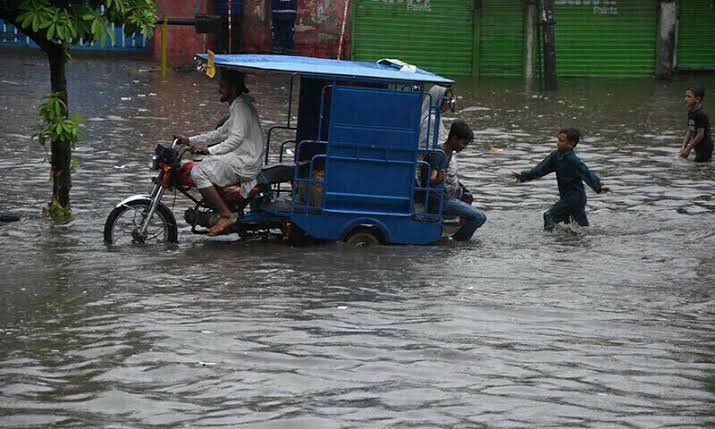
Khyber Pakhtunkhwa reported three new deaths and five injuries. Islamabad and Gilgit-Baltistan each recorded two deaths, while one fatality was reported in Sindh.
Punjab has seen the highest toll, with 144 deaths and 488 injuries. Khyber Pakhtunkhwa follows with 63 fatalities and 79 injuries. Sindh has reported 25 deaths and 40 injuries, and Balochistan has seen 16 deaths and four injuries. In the capital, Islamabad, there have been eight deaths. Gilgit-Baltistan has recorded seven, and Azad Jammu and Kashmir two.
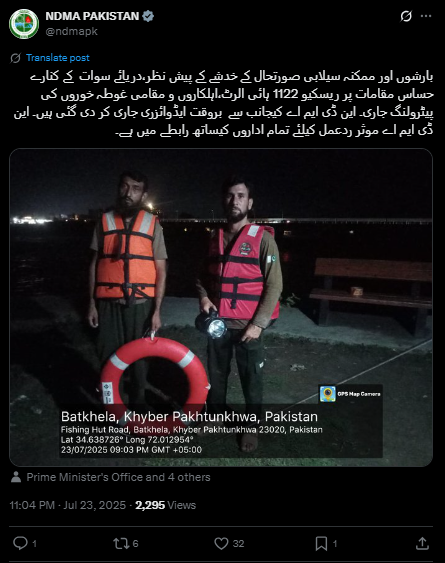
Source: X/@ndmapk
Climate Impact: Key Numbers
| Category | Fact or Figure |
|---|---|
| GDP loss by 2050 | Up to 20 percent (World Bank) |
| 2022 flood damages | $14.9 billion (infrastructure), $15.2 billion (economic) |
| Estimated total losses | $30 to $40 billion |
| People affected in 2022 | 33 million |
| People displaced in 2022 | Nearly 8 million |
| Long-term economic losses | $29.3 billion (1992–2021) |
| Required climate funding | $348 billion by 2030 |
| Lives saved with energy upgrades | 175,000 lives (by 2030, UNICEF) |
| Rainfall record in April 2024 | 164 percent above average |
| Deaths from June–July 2025 | Over 180 deaths due to floods and landslides |
What Needs to Happen
Pakistan must address climate change as more than just an environmental issue. It is now a social, economic, and security threat. This entails investing in disaster-resistant infrastructure, clean energy sources, early warning systems, and enhanced water management.
Lawmakers need to revise outdated land, energy, and agricultural policies to better address the impacts of extreme weather. Cities must be planned with climate risks in mind to prevent damage from floods or storms. Switching to renewable energy and using resources more efficiently can cut harmful emissions. In farming, sustainable practices such as conserving water and utilizing innovative technology can help protect crops and the environment. National and local governments must work together closely. Cutting waste and stopping corruption are also key. Climate decisions should be based on science, not politics. With better planning, Pakistan can be more prepared for future climate challenges.
Pakistan cannot manage this crisis on its own. Donors must provide more grants, not loans. And global institutions need to recognize that countries like Pakistan are on the front lines of a climate emergency they did not create.
Climate change didn’t start Pakistan’s problems. But it is making all of them worse. It exposes weak infrastructure, fragile health systems, broken institutions, and political paralysis.
The subsequent floods or heatwave won’t wait for Pakistan to catch up. Whether the country survives the climate crisis will depend on how it prepares and whether the world provides assistance to help it do so.

